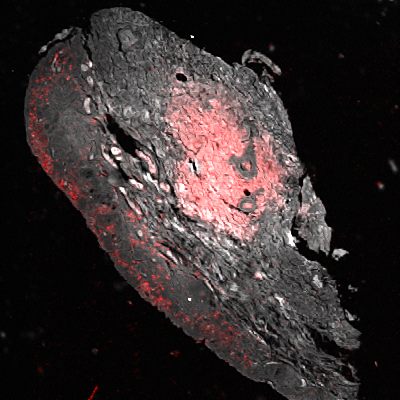Optoacoustic microscopy
Structural & Morphology Characterization (Light and acoustic microscopy)
A prototype hybrid microscopy platform integrating optical resolution photoacoustic and traditional confocal fluorescence imaging has been developed to provide simultaneously two different contrast modes with high spatial resolution and sensitivity. The hybrid system employs two laser beams; a pulsed one for the efficient generation of ultrasonic waves following the selective absorption of time-variable intensity radiation (photoacoustic effect), and a continuous wave beam for fluorescence excitation. The two beams are focused by an objective lens and the respective signals are concurrently detected by a piezoelectric transducer and a photomultiplier tube respectively. As the underlying physical mechanisms are completely different for the two incorporated modalities, the hybrid microscope has the potential to offer high imaging specificity based on the local optical absorption and fluorescence properties of the investigated specimens, leading to the acquisition of composite images with significant levels of contrast complementarity. Photoacoustic microscopy can substantially extend the typical imaging depths provided by pure optical microscopy methods (<500 μm) through the selective transformation of optical absorption information into ultrasonic waves in the MHz regime, experiencing significantly less scattering or attenuation effects. In soft tissues, the scattering coefficient of ultrasound compared to visible or near infrared light is up to 3 orders of magnitude lower, allowing for the extraction of diagnostic information in depths of up to several mm, retaining also a sufficiently high spatial resolution.




